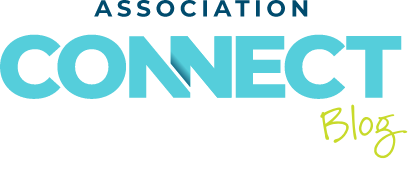Workplace Reentry and Mental Health: What to Consider

Returning to the workplace involves many safety guidelines, but as your office reopens, it’s imperative you champion the mental health of your employees every bit as much as you enact physical protocols. Workplace reentry will involve adaptations to personal and professional life, and for many, this will lead to worry and stress. We can’t expect organizational leaders to act as mental health professionals, but they can and should build greater awareness of, sensitivity toward, and responsiveness to employee concerns by taking the following into consideration.
Start With Questions
A 2019 WHO study estimated that depression and anxiety cost the world’s economy about $1 trillion each year in lost productivity. In an article on managing reentry anxiety for Harvard Business Review, executive vice presidents of United Minds Sarah Clayton and Anthea Hoyle note thatemployers who wish to reduce anxiety should consider the following questions:
- Do we follow the example of Twitter, Facebook, Nationwide, and others and move to a largely remote model?
- If not, to what extent will we allow different employee groups to choose when to come back to the office?
- Is a wholesale reevaluation of our work-from-home policy in order?
- What accommodations do we need to make to enable a truly hybrid (including work-from-home and remote employees) workforce?
- How can we ensure a continuing priority on diversity, equity, and inclusion while managing a remote or hybrid workforce—and that there won’t be unintended consequences for those who remain offsite?
- How will we protect older workers, employees with medical conditions, parents, and populations disproportionately impacted by the virus from being discriminated against?
Once you have thought seriously about these structural inquiries, you can take the following steps to encourage a return to the workplace that supports emotional and psychological health.
Hold Return-to-Work Meetings
One-on-one return-to-work meetings will help reorient employees into the workplace. They are also a good opportunity for employees to share any issues or concerns with their managers. These meetings can take place before and after returning. During these meetings, employers might choose to encourage employee control over decisions about where and when they work. If you choose to empower employees with work flexibility, you should document any arrangements made.
Take an Individualized Approach
Some of your employees have kids. Some of your employees are caretakers. Some of your employees have more than one job. These scenarios and more illustrate that one-size-fits-all approaches to how employees work aren’t pragmatic with regard to remote work amid a pandemic, and they’ll likely prove ineffective as employees return to the office. Consider affording autonomy to managers and direct supervisors to help employees develop individualized plans. Doing so may quell employee anxiety and result in improved mental health and job performance.
Execute Awareness, Offer Compassion, Honesty, and Openness
The Centers for Disease Control and Prevention says employers should be on the lookout for a number of stress danger signals on the part of returning-to-work employees:
- Trouble concentrating
- Irritation, anger, or denial
- Uncertainty, nervousness, or anxiety
- Lack of motivation
- Feeling tired, overwhelmed, or burned out
- Feeling sad or depressed
- Insomnia
Recognize that every employee had a different experience and reaction to the pandemic full of unique stressors. Actively listen as you check in with employees, and consider sharing what you are struggling with to encourage reciprocal transparency. Communication will be key in reducing employees’ uncertainty and building emotional support.
Provide Support Without Fear of Stigma or Penalization
Because of the stigma associated with mental disorders, employers need to ensure that individuals feel supported and able to ask for support in continuing with or returning to work. Employees should know where to go and who to talk to internally if they are experiencing difficulties with mental health. Leadership can provide managers with mental health literacy and training in how to talk about mental health that they can use to help their staff, including the latest information on the impact of COVID-19 on mental health. As Christine Muldoon, vice president of strategy at WebMD Health Services, wrote in Business Insider, “Employers can support employees struggling with stress and anxiety by subsidizing telehealth visits with mental health professionals or web-based meditation classes.”
Cultivate a Culture of Authenticity
While stay-at-home orders separated many of us physically, living amid the pandemic created a shared experience that has in many cases brought us closer. As people return to the workplace, actively encourage people to continue connecting in a multifaceted way while physically distancing in the office. Meaningful relationships will improve trust and performance. And don’t forget the employees who have continued to attend the workplace over the past few months. While they didn’t experience a transition to remote work, their professional life has been far from business as usual.
Remember
Implementing pro-mental health policies is an ethical decision, but it’s also an investment in your greatest asset. As Muldoon noted, “The World Health Organization estimates that for every dollar U.S. employers invest in treating common mental health issues, they earn $4 back in increased employee health and productivity.”
As your association plans a return to the workplace, some of your employees are most likely or will be struggling with mental health. Seriously and compassionately supportingthe psychological well-being of employees during reentrywill boost productivity, company culture, and your bottom line. And leaders who take steps now and continue to advocate for mental healthwill be rewarded with employee loyalty and an improved reputation for years to come.
Have an idea for an article? Let us know!
Receive the Association Connect newsletter
A proud company of The YGS Group | HQ: 3650 W. Market St., York, PA 17404
- Privacy
- YGS Association Solutions © 2025

